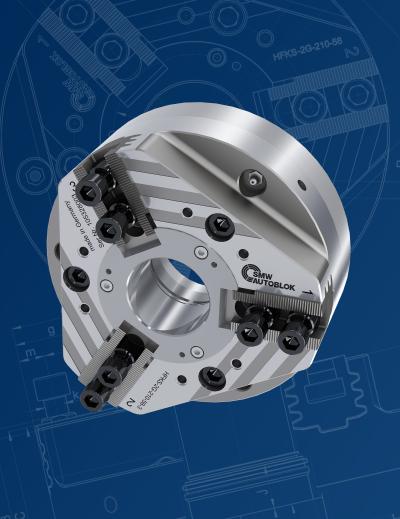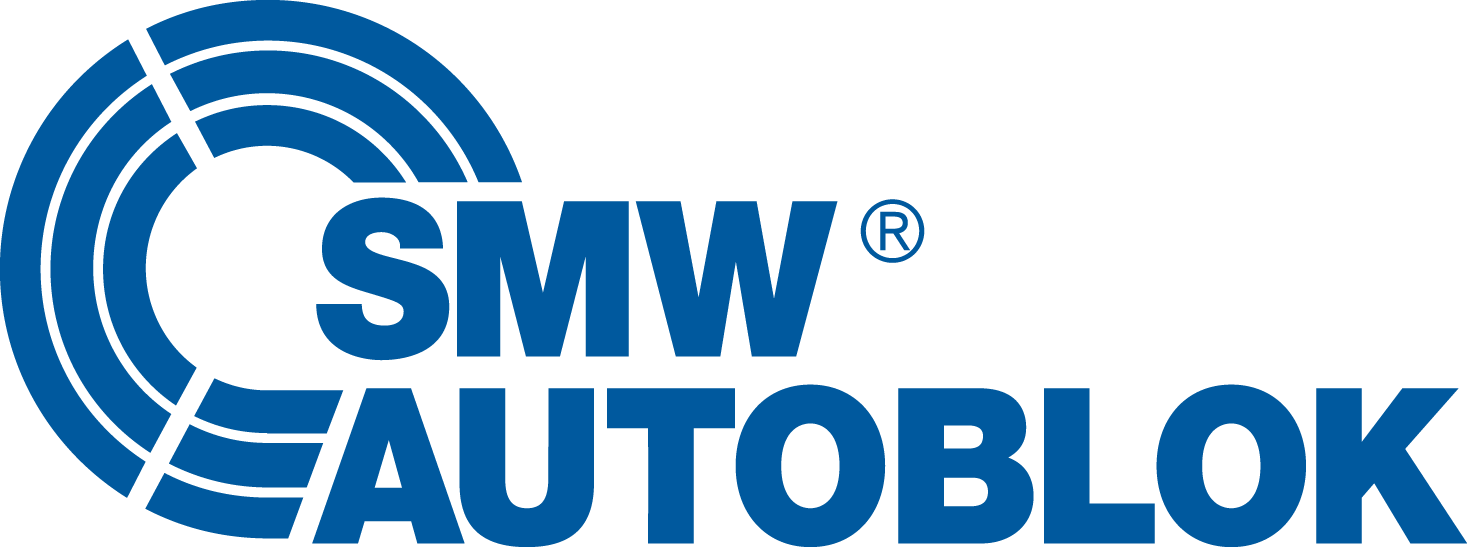
SMW Autoblok, a world leader in the design and manufacture of rotational chucks, stationary workholding, tooling and custom engineered solutions for the machine tool industry, introduces the HFKS-2G weight optimized power chuck with flats and large through hole for minimizing inertia, maximizing part accessibility, and saving wear and tear on the spindle.
Ideal for high volume lathe and mill turn applications, the HFKS-2G is optimum for heavy duty precision machining of easily deformed workpieces. Thanks to flats on the chuck body technology and lighter weight, the ability to use shorter tools to gain closer access to workpieces provides added parts precision and cost efficiency.
Unique to the HFKS-2G is the wedge hook mechanism combined with multi jaw guide, which multiplies the points of contact and provides added surface connection and stability. This specially designed guidance system features inclined geometry that locks the master jaw mechanically after clamping against the chuck body and dramatically reduces jaw movement.
The integrated centrifugal force compensation enables significantly higher speeds and delivers double the grip force at maximum RPM compared to other industry 3-jaw chucks. Direct lubrication channels and grease reservoirs integrated in the jaw guideways ensures constant clamp force and improved accuracy even in harsh machining environments. This specially designed lubrication system also minimizes downtime and reduces maintenance costs. The chuck body and internal parts are case hardened for increased chuck life and highest rigidity, precision and durability. This advanced power chuck accepts inch serrated top jaws and is available in sizes from 165-320 mm.
Contact Details
Related Glossary Terms
- chuck
chuck
Workholding device that affixes to a mill, lathe or drill-press spindle. It holds a tool or workpiece by one end, allowing it to be rotated. May also be fitted to the machine table to hold a workpiece. Two or more adjustable jaws actually hold the tool or part. May be actuated manually, pneumatically, hydraulically or electrically. See collet.
- lathe
lathe
Turning machine capable of sawing, milling, grinding, gear-cutting, drilling, reaming, boring, threading, facing, chamfering, grooving, knurling, spinning, parting, necking, taper-cutting, and cam- and eccentric-cutting, as well as step- and straight-turning. Comes in a variety of forms, ranging from manual to semiautomatic to fully automatic, with major types being engine lathes, turning and contouring lathes, turret lathes and numerical-control lathes. The engine lathe consists of a headstock and spindle, tailstock, bed, carriage (complete with apron) and cross slides. Features include gear- (speed) and feed-selector levers, toolpost, compound rest, lead screw and reversing lead screw, threading dial and rapid-traverse lever. Special lathe types include through-the-spindle, camshaft and crankshaft, brake drum and rotor, spinning and gun-barrel machines. Toolroom and bench lathes are used for precision work; the former for tool-and-die work and similar tasks, the latter for small workpieces (instruments, watches), normally without a power feed. Models are typically designated according to their “swing,” or the largest-diameter workpiece that can be rotated; bed length, or the distance between centers; and horsepower generated. See turning machine.
- milling machine ( mill)
milling machine ( mill)
Runs endmills and arbor-mounted milling cutters. Features include a head with a spindle that drives the cutters; a column, knee and table that provide motion in the three Cartesian axes; and a base that supports the components and houses the cutting-fluid pump and reservoir. The work is mounted on the table and fed into the rotating cutter or endmill to accomplish the milling steps; vertical milling machines also feed endmills into the work by means of a spindle-mounted quill. Models range from small manual machines to big bed-type and duplex mills. All take one of three basic forms: vertical, horizontal or convertible horizontal/vertical. Vertical machines may be knee-type (the table is mounted on a knee that can be elevated) or bed-type (the table is securely supported and only moves horizontally). In general, horizontal machines are bigger and more powerful, while vertical machines are lighter but more versatile and easier to set up and operate.
- precision machining ( precision measurement)
precision machining ( precision measurement)
Machining and measuring to exacting standards. Four basic considerations are: dimensions, or geometrical characteristics such as lengths, angles and diameters of which the sizes are numerically specified; limits, or the maximum and minimum sizes permissible for a specified dimension; tolerances, or the total permissible variations in size; and allowances, or the prescribed differences in dimensions between mating parts.

